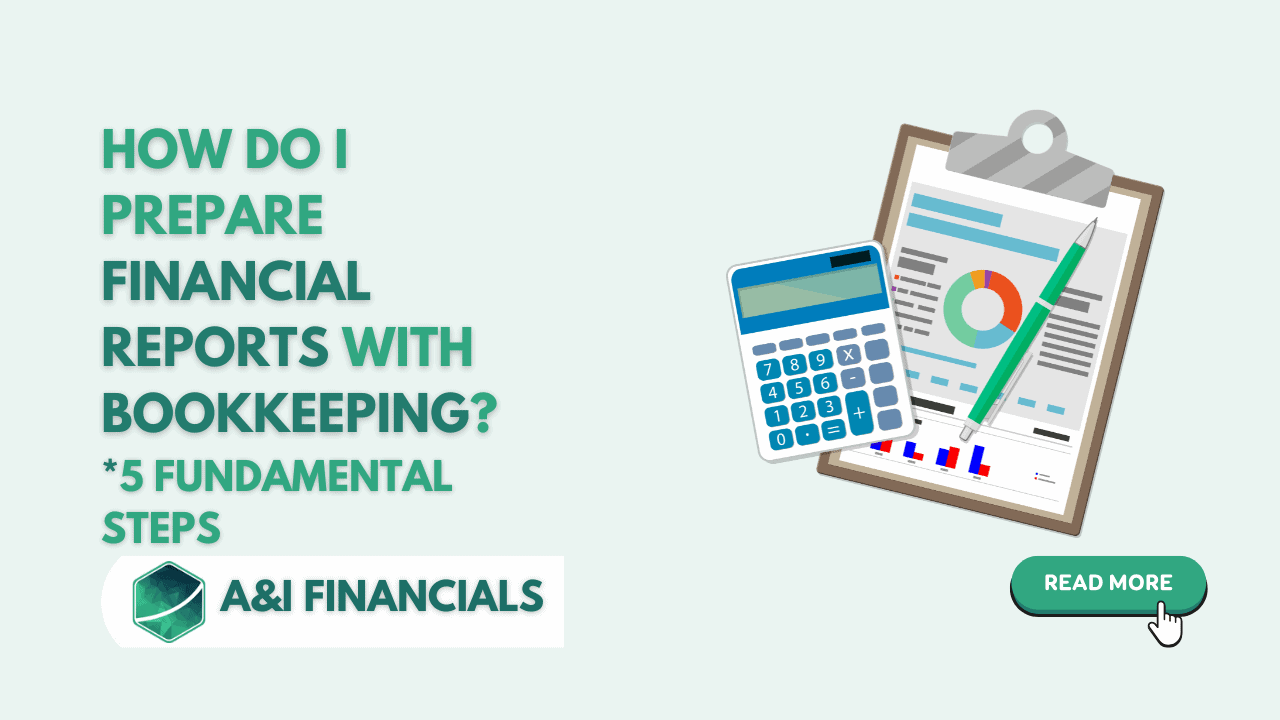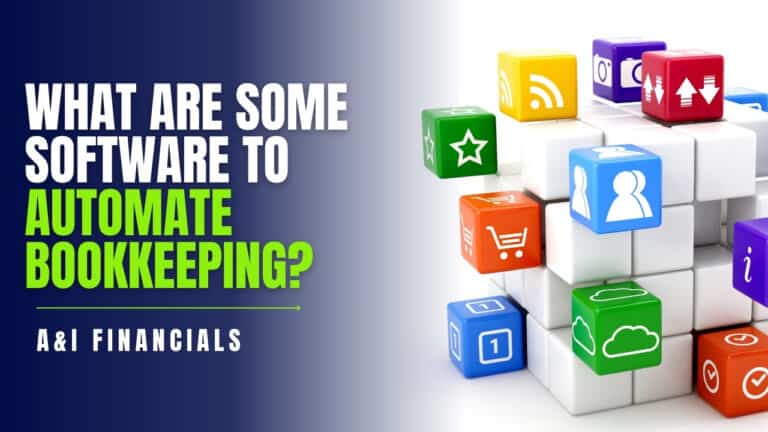How Do I Prepare Financial Reports With Bookkeeping? 5 Fundamental Steps
Ever wondered, “How do I prepare financial reports with bookkeeping?” Well, it’s simpler than you might think! If you’ve got a business or are managing finances, learning how to compile financial reports is a game-changer. You don’t need to be a seasoned accountant—just a few key steps, some understanding of basic terms, and a bit of organization can help. So, let’s dive into how you can make sense of financial data and prepare accurate financial reports that tell the true story of your business.
Getting Started With Bookkeeping Basics
To create financial reports, you need a solid foundation in bookkeeping. Bookkeeping is all about recording every financial transaction. Think of it as keeping a diary of your business’s money activities. Here’s what you need to keep track of:
- Assets: Anything valuable your business owns, like cash, inventory, or equipment.
- Liabilities: Money your business owes to others, like loans or accounts payable.
- Equity: The value of your assets minus your liabilities.
Once you’ve got these basics in place, you’re ready to use this data to create financial reports.
Steps to Prepare Financial Reports With Bookkeeping
Let’s walk through the steps to prepare financial reports in a way that’s simple and straightforward.
- Organize Your Financial Data
Start by gathering all your financial records. These include invoices, receipts, bank statements, and loan documents. Using accounting software can be incredibly helpful here, as it keeps everything in one place.
Tips for organizing financial data:
- Keep digital copies of all receipts and invoices.
- Separate transactions by category (e.g., revenue, expenses, assets).
- Record each entry in your bookkeeping software.
- Track Your Revenue and Expenses
Revenue is what you earn, and expenses are what you spend. Tracking these ensures you can clearly see your gross profit, which is revenue minus the cost of goods sold. This is vital to understanding your profitability. Remember to include all sources of revenue and every expense, from rent to operating expenses.
Examples of expenses:
- Salaries and wages
- Rent and utilities
- Cost of goods sold
- Marketing expenses
Keeping a close eye on these numbers gives you an accurate picture of your business’s operating income.
- Create Key Financial Statements
Once your data is organized and updated, it’s time to prepare the financial statements. Each one serves a unique purpose, helping you and others understand different aspects of your business’s performance.
The Key Financial Statements:
- Income Statement: This report shows your net income over a specific period. It outlines your revenues, costs, and expenses. Subtracting the total expenses from total revenue gives you the net profit.
- Balance Sheet: A balance sheet gives a snapshot of your assets, liabilities, and equity. It’s like a financial selfie of your business at any moment. Assets should always equal liabilities plus equity.
- Cash Flow Statement: This report tracks the cash coming in and going out. It includes cash flows from operating activities, investing activities, and financing activities. Essentially, it shows whether your business has enough cash to cover its bills and reinvest for growth.
- Calculate Net Income and Gross Profit
In the income statement, net income is the figure everyone looks at. This is your profit after subtracting all expenses, including taxes and interest. Gross profit, on the other hand, is your revenue minus the cost of goods sold (COGS). By calculating these two, you get a clear view of your business’s profitability.
Example:If your total revenue is $50,000 and your expenses add up to $30,000, your net income would be $20,000. This gives you a clearer picture of how well your business is performing.
- Monitor Cash Inflows and Outflows
Cash flow is the heartbeat of any business. Cash inflows and outflows tell you how money moves in and out. Your cash flow statement shows this over a period. This report is vital for understanding if you have enough cash to sustain operations or invest in growth.
Sections of the Cash Flow Statement:
- Operating Activities: Day-to-day business activities, like selling products or services.
- Investing Activities: Money spent on assets, like equipment or property.
- Financing Activities: Loans, debt payments, or any cash transactions with investors.
Key Bookkeeping Terms to Know
Before diving deeper, here are some terms that pop up frequently in financial reporting:
- Accounts Receivable: Money owed to you by customers. Keeping tabs on this helps in tracking who owes what.
- Accounts Payable: Money you owe to suppliers or vendors. This helps in managing your cash flow better.
- Long-Term Liabilities: These are debts or obligations that are due in more than one year, like loans.
Familiarizing yourself with these terms will make creating and understanding financial reports a lot smoother.
Why Financial Reports Matter
Financial reports are essential tools that offer a snapshot of your business’s health. They help you see how much you’ve earned, how much you’ve spent, and where your money is going. These reports reveal net income, gross profit, and cash inflows and outflows. In simple terms, they’re like a report card for your business, helping you and potential investors make informed decisions.
If you’re handling bookkeeping, understanding these reports ensures that every dollar is tracked. Plus, you’ll get better insights into aspects like accounts receivable, accounts payable, and operating expenses. These are the building blocks of any solid financial strategy.
Tools to Simplify Financial Reporting
Using accounting software can make a world of difference. Tools like QuickBooks, Xero, and FreshBooks automate many parts of bookkeeping, allowing you to focus on analyzing rather than compiling data. They can generate income statements, balance sheets, and cash flow statements in minutes.
How Software Helps:
- Reduces errors in calculations.
- Saves time by automating repetitive tasks.
- Stores financial data in an organized, easily accessible format.
Analyzing Your Financial Reports
After you prepare these reports, it’s time to analyze them. Here are some things to look for:
- Compare Net Income to Operating Income: This helps in understanding your profitability after deducting operating expenses.
- Check Assets vs. Liabilities: If your liabilities exceed assets, it could be a red flag.
- Evaluate Cash Flow: A positive cash flow means your business is self-sustaining, while negative cash flow might mean you’re relying on loans or investments to stay afloat.
Analyzing these reports regularly allows you to make informed business decisions, plan for taxes, and even spot growth opportunities.
Using Financial Reports to Make Better Business Decisions
Financial reports do more than satisfy accounting requirements—they are powerful tools for decision-making.
For instance:
- Cutting Costs: If operating expenses are high, find ways to cut costs.
- Improving Revenue: Analyze your revenue streams. Are certain products more profitable? Focus on those.
- Planning for the Future: Long-term financial planning becomes easier when you know your assets, liabilities, and equity.
These insights enable you to steer your business in the right direction.
Common Mistakes to Avoid
When it comes to financial reports, a few mistakes can lead to big problems. Here are some pitfalls to watch out for:
- Not Recording Every Transaction: Missing transactions skews your data.
- Failing to Separate Personal and Business Finances: This makes bookkeeping harder and creates errors.
- Ignoring Small Expenses: Every expense counts. Even a small cost impacts your net income.
Avoiding these mistakes can save time and prevent errors in your financial statements.
How Do A&I Financials Prepare Financial Reports With Bookkeeping?
A&I Financials prepares financial reports with a meticulous approach to bookkeeping, ensuring accuracy, transparency, and reliability at every step. Our process begins with a thorough review of all financial transactions—capturing every dollar earned, spent, or invested. We organize these records into key categories like assets, liabilities, equity, revenue, and expenses, ensuring that each entry is clear and accurate.
Using advanced accounting software, we track accounts payable, accounts receivable, and operating expenses, which provides a precise view of cash flows and outstanding balances. Next, we prepare essential financial statements, including the income statement, balance sheet, and cash flow statement, to deliver a full picture of the business’s financial health.
Each report is verified through a multi-level review, maintaining compliance with industry standards and financial regulations. At A&I Financials, our structured, careful approach ensures our clients receive comprehensive financial insights to support informed business decisions.
Final Thoughts
Preparing financial reports with bookkeeping may seem daunting, but with organized data, the right tools, and a clear understanding of your financial picture, you’ll get the hang of it. By tracking accounts payable and receivable, monitoring cash inflows and outflows, and understanding your income statements and balance sheets, you’ll have everything you need to make informed, strategic decisions.
Remember, financial reports aren’t just numbers—they tell the story of your business’s journey. Keep it simple, stay organized, and let your financial data be your guide to success.
FAQs
Cash accounting records transactions when cash changes hands; accrual accounting records when earned or incurred.
A trial balance ensures all debit and credit entries are balanced, identifying potential errors before final reporting.
Monthly updates offer timely insights, though quarterly and annual reports are also common for deeper analysis.
Depreciation spreads the cost of assets over time, impacting net income and balance sheets.
Yes, forecasting predicts future financial performance, while reporting reflects past and current performance.






